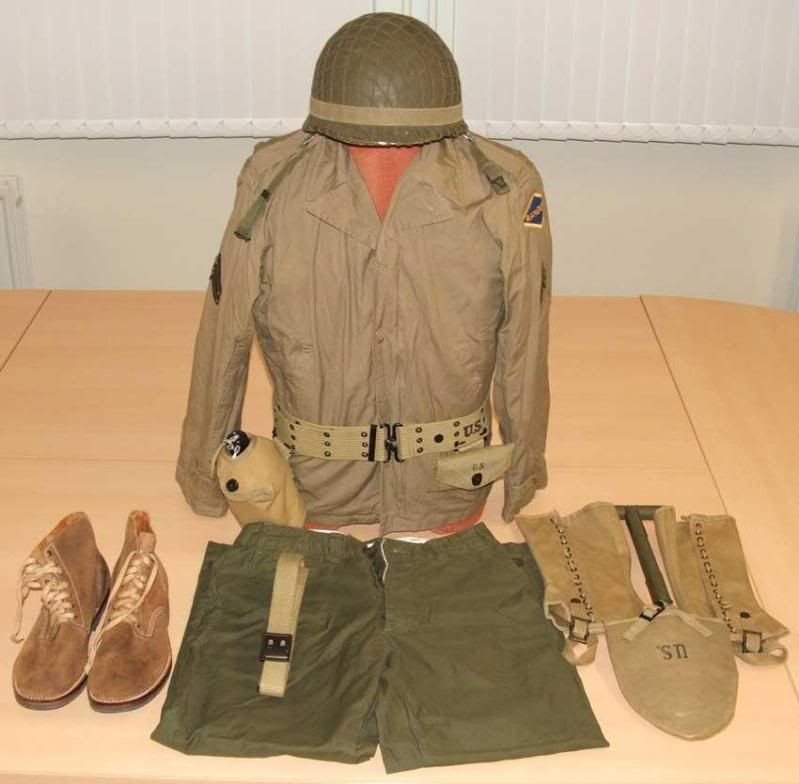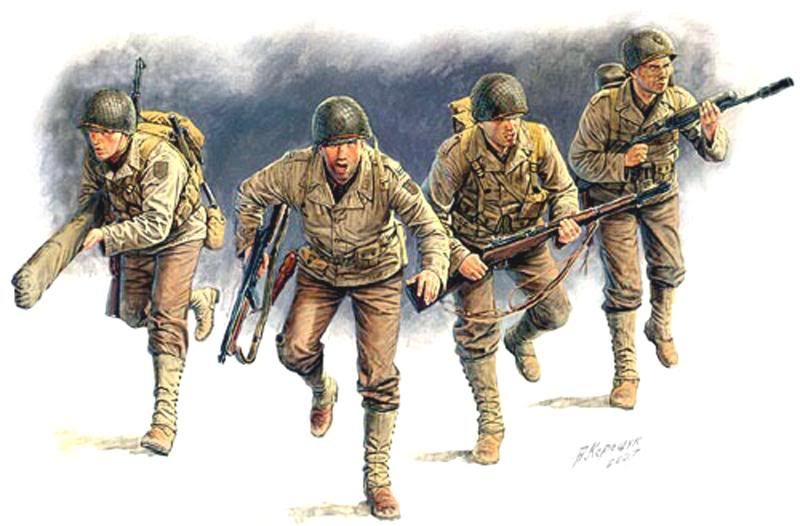If you're asking about manufacturers, I'm stumped, other than Revell Germany's 1/72 stuff... Might want to start here, and narrow your subject down..
http://www.google.com/search?tbm=isch&hl=en&source=hp&q=1%2F72+WW2+US+Army+figures&btnG=Search+Images&gbv=2&aq=f&aqi=&aql=&oq=
As for tanks, only four made it ashore in that sector IIRC, the rest were sunk or swamped... Here's a little something I found..
http://www.history.army.mil/html/reference/normandy/TS/OD/OD14.htm
Again, I just know the Revell figures for the Germans, and (not being a smart-azz) I'd use the the figures that're posed with the MGs, (generally MG 42s, although there were some MG 34s around still).. Finding the exact pose for a figure is next to impossible... Although I deal in 1/35th and 1/48, reposing is somethg that every diorama builder should learn, since you limit yourself with the figures that're all SOB...
"Make the figures fit the story, not the story fit the figures" is my first rule of dio-building.... Converting and bashing figures is not as hard as most people seem to think... In 1/72 scale, it's probably the easiest scale to bash and convert in... All it takes is a break-down of basic human anatomy... Cuat at shoulders, elbows, wrists, neck, hip, thigh, knee and ankle, and finally, the waist, generally at the belt-line.. For more advanced looks, cut just below the shoulder blades to give a figure a "slouched" look when sitting.. GI's in a combat zone don't sit at attention, lol...
What generally happens with figures is that you usually end up buying a box of 'em for one or two poses if you don't learn to convert 'em... Anyway, they're cheap enough so that doesn't matter, lol..
If you want to learn a bit about converting, posing, and painting figures for dioramas, pick up a copy of Shep Paine's book, How to Build Dioramas, which you can get here through Kalmbach Publishing, or (my choice) through AmaazonDOTcom, where you can get it either the 1st or 2nd edition, and can get it new or used (my choice)... I'd also be happy to work with you, back-channel, and send you pictures of some figures as I build them. I'm working in 1/48th right now, but the techniques are the same... Just PM me ("Start Conversation") whenever, if you need help and I'll see what ya got trouble with from the photo yousend....

This Staff Sergeant came from a combination of Tamiya and Italeri figures, torso and legs being Italeri, and arms Tamiya... The head was also Tamiya (didn't care which one for obvious reasons)...
The pistol was also scratch-built, since I didn't have a .45 anywhere in my "US Army/USMC Arms Room", and nowhere to go to get one (it was about 0300 when I got to needing it, lol), so I used the grip from a Brit Sten Gun SMG, and made the upper receiver/slide from strip styrene...
Hope I can help ya further, but untill you lay your hands on some figures, we gotta wait.. Just make sure you get the right uniforms on the figures as well.. Rangers and the 29th's Infantry wore different uniforms (basically, you need figures with the Ranger's Assault Vests and the short Combat Jacket. Skip the Assault Vest for the 29th figures.)

Note canvas leggings. These were issued to both Rangers and the rest of the US Army, the exception to that rule are the Jump Boots for the Airborne... The short leather leggings weren't issued until late 1944, so watch the figures or you'll be doing putty-work.. Well, actually paint would be enough is 1/72... Also, note the Ranger Assaut Vest. This wasn't issued to regular infantrymen.

29th ID figures would be in1943 Herringbone Twill (HBT) combat fatigues (Same as the 1st ID figures above) with service shoes and leggings, kitted out with M1928 pattern haversack (so would the Rangers) and M1910 trenching tool plus a selection of ammo pouches, first aid pouches and some haversacks and larger ammo bags.
Also, the M1926 US Navy loose fitting life belt was worn around the waist and should also wear the gas detection arm brassard on the upper right arm which was chemically treated material that changed color if chemicals were present, worn early in the Normandy landings...
Subseqent waves didn't bother with them, although the pro-mask was still carried... (Until a GI could find a place to "lose" it...  When you're on LPCs (Leather Personel Carriers, ie Boots.) for transportation and carrying everything you need to live in the field with on ya, the pro-mask is about 5-6 lbs you can lose from your load.....)
When you're on LPCs (Leather Personel Carriers, ie Boots.) for transportation and carrying everything you need to live in the field with on ya, the pro-mask is about 5-6 lbs you can lose from your load.....)
Hope this helped a ittle, and don't be shy about asking for help, especially for a project this large... You'll still need a LOT of space (meaning a large base) for this dio, even though you're planning on 1/72...